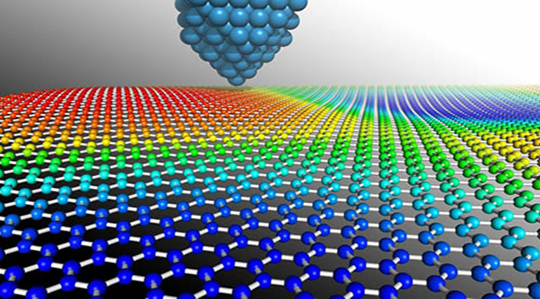
当前课程知识点:Food Microbiology Testing > Chapter 5 Detection of Salmonella spp. > 5.2 Detection of Salmonella spp. GB4789.4-2016 (Ⅱ) > 5.2 Detection of Salmonella spp. GB4789.4-2016 (Ⅱ)
返回《Food Microbiology Testing》慕课在线视频课程列表
返回《Food Microbiology Testing》慕课在线视频列表
平板划线分离出可疑菌后
先取单菌落
至营养琼脂平板上纯化
再进行沙门氏菌的
生化鉴定和血清学鉴定
三糖铁琼脂的主要成分
为葡萄糖蔗糖和乳糖
沙门氏菌主要利用其中的葡萄糖
其反应原理
(1)沙门氏菌可以利用葡萄糖产酸
(2) 酸可以产生二氧化碳
产生气泡
(3)沙门氏菌可以还原Na2S2O3 产生 H2S
与硫酸亚铁铵反应生成黑色的 FeS
而使培养基变黑
在斜面上做好标记
用接种针蘸取少量菌体或孢子
采用先斜面“Z”形划线
后高层穿刺
典型的沙门氏菌
在三糖铁琼脂中的现象为
斜面为红色
中部为黑色
底部为黄色
在生化鉴定之前
首先需用接种环从营养琼脂上挑取纯化单菌落
至生理盐水中
调菌时
注意先在液面上方
试管内壁处研磨
使菌变成悬浊状菌液
充分均匀分散在生理盐水中
浊度与盒内配置的
0.5 麦氏浊度管比较
达到一致浊度时则菌悬液制好
吸取制备好的
0.5 麦氏浊度的均匀菌悬液
分别至试剂盒的 9 个圆孔中
每孔接种量为 0.2mL
其中
氨基酸对照
赖氨酸脱羧酶
氰化钾对照
氰化钾需加 1-2 滴石蜡液封
盖上盒盖
与三糖铁生化管
统一于 36℃±1℃
培养 18h-24h
氰化钾试验
若培养 24h 时仍为阴性
可延长培养至 48h 再观察结果
下面我们来看看
各个生化反应的原理
赖氨酸脱羧酶的反应原理为
某些细菌在酸性厌氧环境
且有赖氨酸底物存在的情况下
能诱导产生赖氨酸脱羧酶
使赖氨酸脱羧产生尸胺
导致培养基变紫
而不产生赖氨酸脱羧酶的细菌
只能代谢葡萄糖产酸
使培养基变黄
氰化钾培养基的反应原理
某些细菌的呼吸链酶系统
可被一定浓度(0.1‰)的氰化钾抑制
而导致细菌不能生长
还有某些细菌不被氰化钾抑制
所以在有氰化钾存在的情况下
仍能生长
可以以此鉴别细菌
使用时的注意事项
剧毒 做好个人防护
蛋白胨水的反应原理
蛋白胨中的色氨酸
被细菌代谢产生的色氨酸酶水解
产生吲哚
在加入对二甲氨基苯甲醛试剂后
与之作用生成醌类结构的玫瑰红色物质
沙门氏菌与其反应液面
不会出现红色环
尿素酶的反应原理
某些细菌能产生尿素酶水解尿素
生成碱性碳酸铵
从而使培养基
由橙红色变成粉红色
首先观察三糖铁琼脂
和赖氨酸脱羧酶培养结果
对照沙门标准表 2
只要符合前三行
均为可疑沙门氏菌
再看其他项目结果
对照沙门标准表 3
出现三种情况
第一种情况
如果符合 A1 行结果组合
则为典型反应
可判定为沙门氏菌属
倘若尿素 氰化钾和赖氨酸脱羧酶
3 项有一项不符合
则需要按表 4 继续进行判定
这三项中有两项异常
即可判定为非沙门氏菌
第二种情况符合 A2 行结果组合
还需要补做甘露醇和山梨醇实验
二者结果应为阳性
再结合血清学鉴定进行判定
有一项异常
即可判定为非沙门氏菌
第三种情况符合 A3 行结果组合
需要补做 ONPG
阴性即为沙门氏菌
有一项异常
即可判定为非沙门氏菌
最后是典型沙门氏菌
生化鉴定实验结果的展示
生化结果符合沙门菌属特征后
我们还需进行血清学的检验
我们首先介绍沙门的三种抗原
第一种是 O 抗原
存在于细胞壁
与抗血清的反应呈颗粒状
第二种是 H 抗原
存在于鞭毛中
与抗血清的反应呈絮状或绒状
第三种是 Vi 抗原
存在于纤毛,
是特殊的菌体抗原
又称荚膜抗原
有抗吞噬
和保护细菌免受相应 O 抗体
和补体的溶菌作用
鉴定至沙门氏属
仅检验 O 多价抗原
H 多价抗原即可
必要时同时检验 Vi 抗原
在玻片上划出两个区域
一边滴加 1 滴 O 多价血清
另一边加入 1 滴生理盐水 作为对照
从营养琼脂上挑取一环纯化菌落
用无菌接种环
分别将两个区域内的菌落
研成均匀乳状液
将玻片倾斜摇动混合 1min
并对着黑暗背景进行观察血清
是否出现凝集
用接种针从营养琼脂上
挑取纯化菌落
点种于半固体琼脂中心处
36±1℃培养 18h
若有扩散生长的菌落出现
则说明该菌有鞭毛
此时需要从边缘处挑取菌苔
进行 H 多价血清学鉴定
操作与 O 多价血清操作方法一致
任何程度的凝集现象皆为阳性反应
谢谢观看
-1.1 Introduction
-2.1 Preparation of culture medium
--2.1 Preparation of culture medium
-2.2 Microbial separation techniques
--2.2 Microbial separation techniques
-2.3 Microbial inoculation techniques
--2.3 Microbial inoculation techniques
-2.4 Exercises
--Chapter 2 exercises
-3.1 Basic elements of food sample testing
--3.1 Basic elements of food sample testing
-3.2 Sample sampling scheme
-3.3 Sample sampling, transporting, processing, testing and report
--3.3 Sample sampling, transporting, processing, testing and report
-3.4 Exercises
--Chapter 3 exercises
-4.1 Detection of Aerobic Bacterial Count
--4.1 Detection of Aerobic Bacterial Count
-4.2 The enumeration of Coliforms
--4.2 The enumeration of Coliforms
-4.3 Exercises
--Chapter 4 exercises
-5.1 Detection of Salmonella spp. GB4789.4-2016 (Ⅰ)
--5.1 Detection of Salmonella spp. GB4789.4-2016 (Ⅰ)
-5.2 Detection of Salmonella spp. GB4789.4-2016 (Ⅱ)
--5.2 Detection of Salmonella spp. GB4789.4-2016 (Ⅱ)
-5.3 Exercises
--Chapter 5 exercises
-6.1 Qualitative method
-6.2 Plate counting
-6.3 The MPN method
-6.4 Exercises
--Chapter 6 exercises
-7.1 Moulds and yeasts count
-7.2 Exercises
--Chapter 7 exercises
-8.1 How to control the quality of food microbiology testing
--8.1 How to control the quality of food microbiology testing
-8.2 Quality control of food microbiology testing
--8.2 Quality control of food microbiology testing
-8.3 Requirements of process control
--8.3 Requirements of process control
-8.4 Exercises
--Chapter 8 exercises
-9.1 Modern food microbiology testing technology (Ⅰ)
--9.1 Modern food microbiology testing technology (Ⅰ)
-9.2 Modern food microbiology testing technology (Ⅱ)
--9.2 Modern food microbiology testing technology (Ⅱ)
-9.3 Exercises
--Chapter 9 exercises




